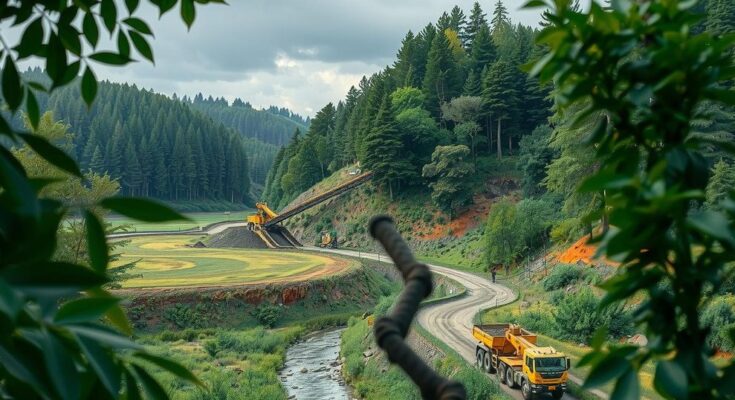Guinea has authorized an Australian company to mine gold in a critical habitat for endangered chimpanzees, despite environmental concerns. The Bankan Gold project could severely impact local wildlife and ecosystems, even though mining will occur outside designated buffer zones. The company hopes to start operations by 2026 after receiving necessary approvals.
The government of Guinea has granted an environmental compliance certificate to an Australian firm, Predictive Discovery, allowing them to proceed with gold mining operations in a habitat crucial for the critically endangered western chimpanzees. This approval follows the completion of an environmental and social impact assessment for the Bankan Gold project, located in the northeast section of Upper Niger National Park.
Predictive Discovery has estimated that the region contains approximately 3.05 million ounces of gold, marking it as a significant discovery in West Africa over the past decade. However, the comprehensive 1,767-page impact assessment indicates that the mining activities are likely to have detrimental, long-lasting effects on the local wildlife, particularly the western chimpanzee, which is prevalent in the area, especially in the Mafou Forest.
Although the core conservation area is situated about 18 kilometers from the planned mining site, it has been reported that previous exploration activities have already displaced several chimpanzees and disturbed others since the project’s inception in 2020. The ongoing mining operations are anticipated to further exacerbate habitat loss and affect the local groundwater levels for an extended period.
Initially, the Bankan project was intended to be located within the park’s buffer zone. However, during discussions with the Ministry of Environment, Predictive Discovery committed to relinquishing any project permits that lie within this zone. The mining will now occur in what has been designated as the “peripheral zone” on the company’s maps, which is a transitional space allowing limited development.
According to the development plan for Upper Niger National Park, strict restrictions are in place for human activities in the core and first buffer zones, while the peripheral or transition zone permits some level of development. Aboubacar Samoura, an official from the Ministry of Environment, acknowledged initial concerns regarding the mining operation’s location but expressed optimism following the company’s decision to withdraw from the buffer zone.
After securing the environmental compliance certificate, Predictive Discovery promptly submitted an application for a mining license, targeting operations to commence as early as 2026.
In summary, Guinea’s decision to approve gold mining in a critical habitat for endangered western chimpanzees has raised significant environmental concerns. The project, while offering economic prospects due to its substantial gold reserves, poses risks to local wildlife and ecosystems. The Ministry of Environment’s intervention to keep mining operations out of the buffer zone presents a cautious approach to balancing development with conservation efforts.
Original Source: news.mongabay.com




